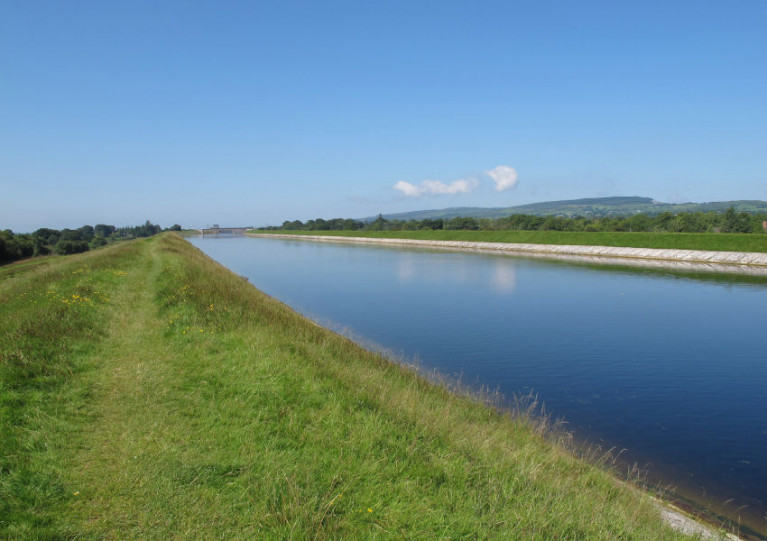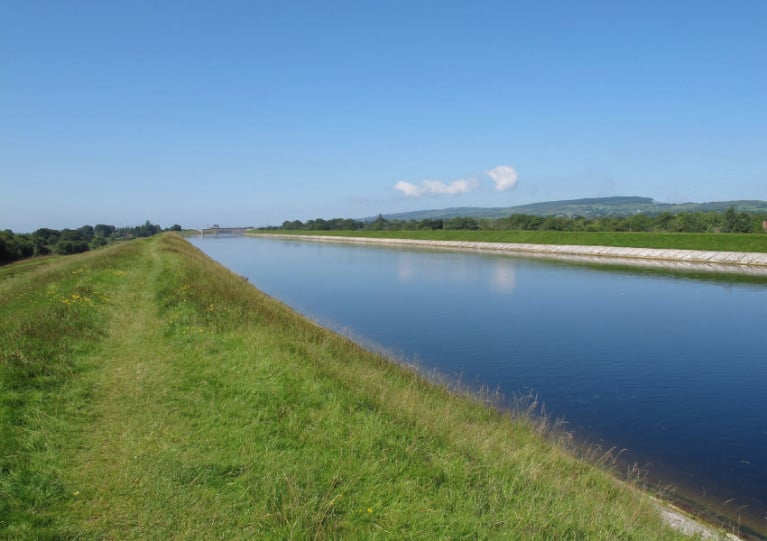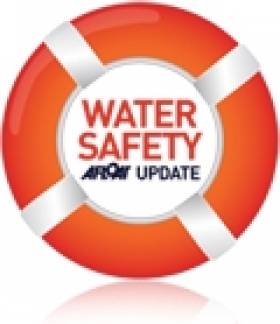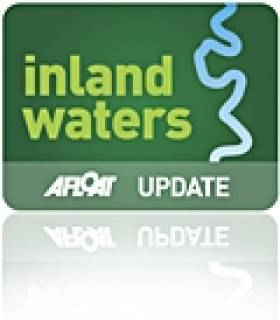Displaying items by tag: Ardnacrusha
Shannon Navigation: Repairs to Ardnacrusha Tailrace Bridge at Parteen
Waterways Ireland advises masters of vessels and waterway users of the Shannon Navigation that an ESB contractor will be carrying out repairs on the Ardnacrusha tailrace bridge at Parteen from Monday 18 September for a period of six weeks.
The works involve repairing some of the deteriorated structure from a pontoon. Masters of vessels using the Ardnacrusha tailrace during the repair works should contact the contractor on 087 6494454 prior to entering the tailrace in order to coordinate safe passage.
Shannon Navigation: Repairs on Tail-Race Bridge at Parteen
Waterways Ireland advises masters of vessels on and users of the Shannon Navigation that an ESB contractor will be carrying out repairs on the tail-race bridge at Parteen, Co Clare from Monday 17 July for a period of six weeks.
The works involve repairing some of the deteriorated structure from a pontoon, the cross-border body for Ireland’s inland waterways adds.
Masters of vessels using the Ardnacrusha tail race during the repair works should contact the contractor on 087 6494454 prior to entering the tail race in order to coordinate safe passage.
Inland Fisheries Ireland Comments on Investigation Into Eels’ Passage of Ardnacrusha Turbines
Inland Fisheries Ireland (IFI) says it would welcome a review of turbine operations at the Ardnacrusha power plant around the peak time for eel migrations.
The statement comes following the publication of its investigation into a report of a fish kill in the lower Shannon last December, allegedly resulting from eels passing through the hydroelectric turbines during Storm Barra.
IFI says a report was received from a member of the public on its confidential hotline late on 8 December, which relayed information seen on social media.
Fisheries officers undertook a detailed investigation during daylight over the next two days, with only one dead eel recovered.
“However, finding only one dead eel may have been due to a variety of reasons,” it says. “For example, there was a time lag between the incident and the reporting of the incident…. Therefore, dead eels may have been taken by predators or are very likely to have been swept further downstream.”
IFI notes the “well-established fact” that the use of hydroelectric turbines such as those used in the ESB plant at Ardnacrusha “results in significant mortalities of eels moving downstream to sea”.
It adds: “In fact, the operation of the turbines at the Ardnacrusha hydroelectric station is estimated to kill over 21% of the total run of down-migrating eels.”
The fisheries body emphasises that it does not have a statutory role in regulating operations at Ardnacrusha, and that fisheries on the River Shannon are owned by the ESB.
“However, Inland Fisheries Ireland would welcome a review of the flow and turbine operations around the time of peak silver eels’ migration. This would improve eel survival rates in the future and improve fish passage generally via the old River Shannon channel,” it says.
The report into this incident can be downloaded below.
Limerick Councillor Lambasts Fisheries Officials Over Illegal Poaching of Wild Salmon From Shannon
A Limerick councillor has hit out at what he branded as the “utter incompetence” of inland fisheries officers after images circulated on social media of as many as 60 salmon allegedly poached from the River Shannon.
As the Limerick Leader reports, the images show the the wild salmon lined up in a front garden, with three men alongside giving thumbs up.
It’s understood that the salmon are thought to have been illegally netted from the tail race at the Ardnacrusha hydro-electric plant.
Commenting on the images, Cllr Emmett O’Brien did not mince his words as he directed his ire at Inland Fisheries Ireland (IFI).
“The dogs in the street know that poachers are putting out nets and catching salmon swimming in the tail race,” he said, adding that there is a black market for such salmon throughout Limerick city.
“But bizarrely the IFI officers rarely if ever patrol the tail race but rather seem intent to race up and down the river in large power boats like Navy Seals.”
IFI says it is “currently investigating the circumstances of this incident and is therefore not in a position to comment further at this stage”.
The Limerick Leader has more on the story HERE.
Waterways Ireland has issued a second advisory for essential diving and engineering works on the Shannon Headrace Canal between Ardnacrusha Power Station and Parteen Weir from today, Tuesday 6 April to Friday 7 May.
As previously reported on Afloat.ie, these works are being carried out on a section of the embankment between Clonlara and Blackwater Bridges.
The Headrace Canal will remain open during these works and buoys/markers will be placed in the canal to highlight the works area.
Inland waterways users are asked to maintain due attention when traversing this section of the Shannon and to maintain their distance from the works.
Essential Diving & Engineerings Works in Ardnacrusha Headrace Canal
Waterways Ireland advises of essential diving and engineering works on the Shannon Headrace Canal between Ardnacrusha Power Station and Parteen Weir.
The works — which were set to commence yesterday, Monday 15 February — are being carried out on a section of the embankment between Clonlara and Blackwater Bridges until Monday 15 March.
The Headrace Canal will remain open during these works and buoys/markers will be placed in the canal to highlight the works area.
Inland waterways users are asked to maintain due attention when traversing this section of the Shannon and to maintain their distance from the works.
Search Resumes After 'Body Part' Spotted In Water Near Ardnacrusha
#Search - TheJournal.ie reports that the search is continuing today (Wednesday 14 October) for a body seen in the water near Ardnacrusha power station.
A passer-by spotted what they believed to be a body part floating in a canal near the Co Clare ESB plant yesterday afternoon, and emergency services responded immediately, with Limerick Marine Rescue Service sending out two diving teams.
The cross-agency response, involving Shannon's Irish Coast Guard helicopter Rescue 115 and Killable Coast Guard, resumed at first light this morning.
Fifth Drowning This Week Puts Water Safety In Spotlight
#WaterSafety - Water safety chiefs have urged the public to take proper care after the fifth drowning of this week's heatwave.
As The Irish Times reports, the body of a 17-year-old boy was recovered yesterday from a canal in Ardnacrusha, Co Clare where he had been swimming with friends on what was the hottest day so far this week.
It follows the tragic deaths of four other young people ranging from 12 to 21 years of age in various incidents around the country in both coastal and inland waters.
The sad news prompted the Irish Coast Guard to urge the public to "keep water safety in mind" when enjoying outdoor activities at any time this summer.
Irish Coast Guard (IRCG) manager Declan Geoghegan said: “With the warm weather forecast, our thoughts naturally go to enjoying the outdoors and outdoor activities. Whether you enjoy swimming, canoeing, surfing, angling, sail boarding, always remember to wear a personal flotation device.”
PFDs include lifejackets and buoyancy aids, and the IRCG reiterated that it is vital to wear a lifejacket or buoyancy aid if your activity takes you near the water, whether at the sea or on lakes and rivers.
Geoghegan continued: “Each year, the Irish Coast Guard is involved in many search and rescue incidents involving people in our seas, lakes and inland waterways. Wearing a PFD isn’t just common sense, it's basic advice that could save your life.”
Advice from the coastguard to stay safe on the water this summer is to always remember and take heed of the following:
- Never go out alone
- Be able to swim - get the proper training to stay safe
- Never go out on the water having consumed alcohol
- Familiarise yourself with the local areal be aware of your own capabilities and that of your craft
- Check your equipment before you set off and tell someone where you are going and what time you will be back
- Never go out when darkness is approaching
Geoghegan urged anyone planning to join in water-based activities to check out the Safety On The Water website which includes guidelines and advice on most watersport and related activities.
#INLAND WATERWAYS - Waterways Ireland has been advised by ESB Energy International that Ardnacrusha Lock is now fully pre-booked over the following periods:
Between midday on Friday 29 June and dusk on Sunday 1 July; and Between midday on Friday 6 July and dusk on Sunday 8 July.
This is to facilitate boats attending the Limerick/Shannon Estuary Rally.
Boat users that are planning to navigate between Limerick and Killaloe in late June early July should schedule passage through Ardnacrusha Lock outside of the periods listed above.
Bridge Works at Ardnacrusha Continue
#SHANNON NAVIGATION – ESB Generation works at Cloonlara bridge at the Ardnacrusha Headrace will continue until the end of February. Further information may be had from the Civil Engineering Manager: Tel: +353 (061) 350509 Mob: +353 (087) 2381104 Fax: +353 (01) 6384594




























































